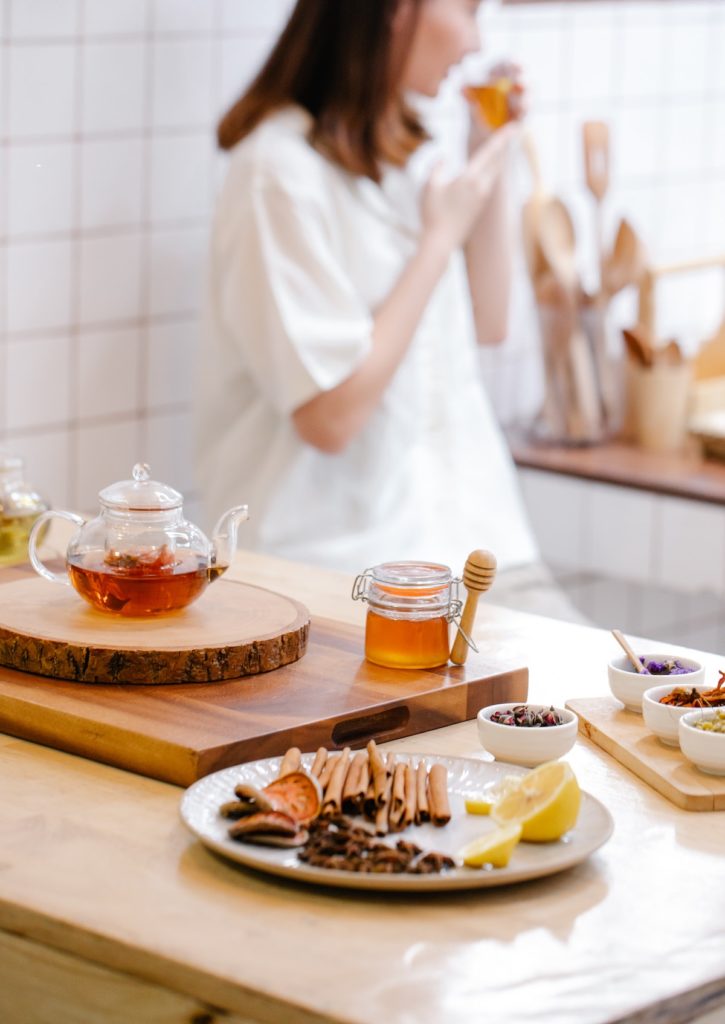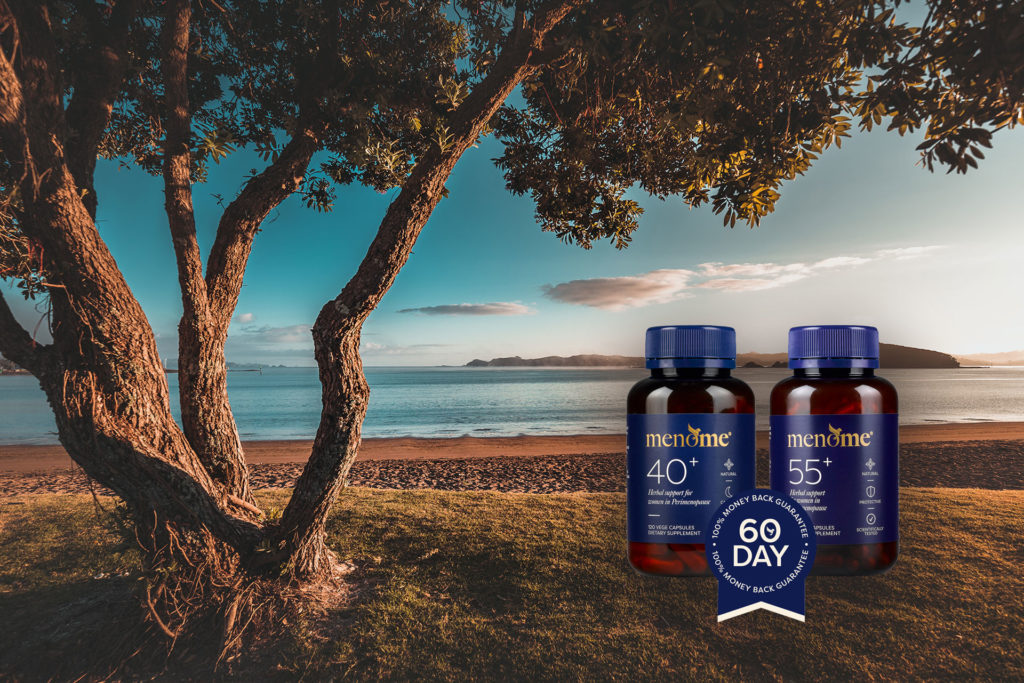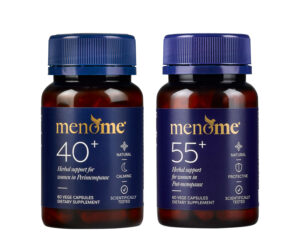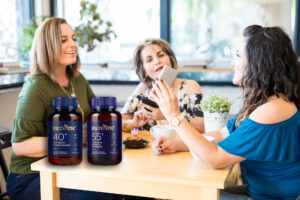Turmeric, Sage, Rosemary – Do Herbs Really Work During Menopause?

When it comes to herbs and menopause, can you use herbs to help with the signs and symptoms?
And the answer is…absolutely, emphatically yes!
However, another key point here is that the quality of herbs for menopause on the market can vary. For this reason, it’s important you look for assurances such as ‘Scientifically Researched’.
You might like: The Science behind MenoMe®
The history of herbs and menopause

Healing herbs have been used for thousands of years in traditional medicine. And longstanding rituals have seen them ease menopause symptoms and improve quality of life for women.
Therefore, herbs for menopause are nothing new. Indeed, many holistic practitioners and those in the know embrace the power of herbs during menopause. For example, some popular ‘menopause’ herbs include turmeric, sage and rosemary.
What’s more, these herbs are supported by scientific data i.e.
- Curcumin, the active ingredient in turmeric is widely touted as an anti-inflammatory. However, a 2021 study found it could also be helpful for cardiovascular health in post-menopause1.
- Rosemary is rising up the ranks and clinical effects have been found for mood, memory, pain, anxiety and sleep2.
- Sage has demonstrated clinical value for the treatment of hot flushes and other menopausal symptoms3.
And sage is one of the herbs in the Scientifically tested EstroG-100™ we use in 40+ and 55+.
You might like: Menopause Remedies You Can Do At Home – 5 Of Or Favourites
How MenoMe® uses herbs during menopause

At MenoMe® we take a natural, holistic approach to managing menopause. And the superheroine ingredient in 40+ and 55+ is a trio of herbal root extracts known as EstroG-100™.
There is compelling evidence for their efficacy as they’re supported by three published pharmaceutical-grade clinical trials. For instance, ‘the effect of herbal extract (on pre-, peri- and post-menopausal women’4 is freely available online. (See references.)
Because of these studies, EstroG-100™ has been approved for use as safe by Health Canada, US FDA and Korea FDA. It has patent registration in the US, Korea and Japan and is patent pending in 16 other countries.
You might like: The Science Of Menopause and Herbal Remedies
The herbs in EstroG-100™ for menopause explained
As I have noted, we use a well-researched and clinically proven trio of herbs known as EstroG-100™ in 40+ and 55+.
The threesome includes a sage-like herb (Phlomus Umbrosa), a climbing vine (Cynanchum Wilfordii) and Angelica (Angelica Gigas Nakai). Moreover, they have a long history of use in Traditional Chinese Medicine and Korean herbal tradition.

1. Cynanchum Wilfordii (Milkweed – climbing vine)
Cynanchum Wilfordii or Baeksu-o means ‘white hair becomes black again’ in Korea. And the roots are used as a traditional women’s health herbal treatment. It’s been shown to improve cardiovascular health, vitality, the immune system, epithelial function and protect the liver and corticol neurons.
2. Phlomis Umbrosa (Jerusalem sage)
Phlomis umbrosa is a herbal root extract known as sokdan in Korea which means ‘reconnecting something discontinued’. Significantly, it’s been used for women’s health and as a detoxification aid for thousands of years. Further, Phlomus Umbrosa has been shown to discourage mast cell secretions and histamine.
3. Angelica Gigas Nakai (Angelica)
Known as dangui in Korea, which means ‘going back to the normal state’ angelica gigas nakai is a traditional women’s health remedy. Also known as ‘female ginseng’ it regulates estrogen levels. Additionally, it’s beneficial in the treatment of insomnia, heartburn, arthritis, nervousness, cognition, inflammation, blood circulation and anaemia.
How does EstroG-100™ work?
EstroG-100™ acts like what is known as a selective estrogen receptor modulator (SERM) to regulate estrogen metabolism.
The mechanism of SERM also supports bone density and human growth hormone levels. As a result, it protects against loss of bone density, osteoporosis and cardiovascular conditions.
Scientific testing demonstrated that EstroG-100™ significantly improved at least 10 different symptoms of perimenopause and menopause. These include hot flushes, paresthesia, nervousness, melancholia, vertigo, fatigue, rheumatic pain, formication and vaginal dryness.
Furthermore, no severe adverse effects or change in body weight were reported. Additionally, there was an improvement in the Kupperman Menopause Index (KPI). The KPI scale measures quality of life.
You may like: The Signs & Symptoms Of Menopause
Conclusion
To sum up, when it comes to menopause there is no one size fits all although the use of herbs during menopause has been shown to have benefits.
However, the results women get from taking herbal remedies during menopause and indeed any pharmaceutical treatment can vary.
But this shouldn’t be confused with the idea that menopause and herbal remedies aren’t effective.
And while several herbs are traditionally used to support women in menopause some come with question marks or potential risks.
As shown above, the EstroG-100™ we use in 40+ and 55+ is backed by trustworthy clinical trials.
It also has a very high safety profile.
In fact, it can even be used by women who have had – or are at risk of – hormone-dependent breast cancer.
We hope that helps. If you have any questions please don’t hesitate to get in touch with us.
To view, all of the clinical trials click here.
Share with a friend
Sign up to our mailing list for the latest news and stories and receive a $5 discount code to redeem on your first purchase, plus receive a 3 step eBook on ways to support your body through menopause…
This site is protected by reCAPTCHA and the Google Privacy Policy and Terms of Service apply.
Related Articles
References
- Campbell MS, Fleenor BS. The emerging role of curcumin for improving vascular dysfunction: A review. Crit Rev Food Sci Nutr. 2018;58(16):2790-2799. doi: 10.1080/10408398.2017.1341865. Epub 2017 Aug 21. PMID: 28662351.
- Ghasemzadeh Rahbardar M, Hosseinzadeh H. Therapeutic effects of rosemary (Rosmarinus officinalis L.) and its active constituents on nervous system disorders. Iran J Basic Med Sci. 2020 Sep;23(9):1100-1112. doi: 10.22038/ijbms.2020.45269.10541. PMID: 32963731; PMCID: PMC7491497.
- Bommer S, Klein P, Suter A. First time proof of sage’s tolerability and efficacy in menopausal women with hot flushes. Adv Ther. 2011 Jun;28(6):490-500. doi: 10.1007/s12325-011-0027-z. Epub 2011 May 16. PMID: 21630133.
- Chang A, Kwak BY, Yi K, Kim JS. The effect of herbal extract (EstroG-100) on pre-, peri- and post-menopausal women: a randomized double-blind, placebo-controlled study. Phytother Res. 2012 Apr;26(4):510-6. doi: 10.1002/ptr.3597. Epub 2011 Sep 2. PMID: 21887807.
Main photo by Cottonbro @pexels









